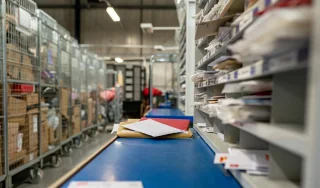Unmanned aerial vehicles (UAVs) – or drones, as they are popularly known – are no longer the preserve of sci-fi or even global governments. Tech giant Google last month announced it is developing a system of these self-flying aircraft to deliver goods as commercial drones look set to dominate our skyline in the future. Jeff Bezos, CEO of online retailers Amazon, made a similar announcement late last year on CBS’ ‘60 Minutes’, stunning Christmas shoppers with the prospect of unmanned drones zipping past Santa and swerving down chimneys to deliver gifts to homes.
While Amazon’s announcement was treated as something of a publicity stunt, Google’s advanced research arm, Google X, has been working on self-flying drones for the past couple of years. The company recently carried out a research trip in Australia, during which packages of cattle vaccines, chocolate bars and dog treats were delivered to two farmers in Queensland. The packages were delivered by a 1.5m-wide single wing, four-propeller prototype. The goods were stored in a gap in the plane’s wing and lowered on a type of fishing line from about 50m above the ground.
The Sky’s the Limit
Google X’s successful experiment opens the way for the development of commercial drones in the near-future. Although the use of such UAVs is currently heavily regulated by the Federal Aviation Administration (FAA), the first commercial overland drone flight – for energy company BP- was approved in June of this year, and more will surely follow. In a press release following its announcement, Google said:
“Throughout history, major shifts in how we move goods from place to place have led to new opportunities for economic growth and generally made consumers’ lives easier. From steam ships to the railroads, from the postal service to delivery services like FedEx and DHL, speed has reshaped society not only with greater convenience but also by making more goods accessible to more people.”
Drones Doing Good
The US government’s development of drones as high-capability weapons-delivery and surveillance systems has led many to fear the extension of such technology into civil and commercial realms. However, unmanned aircraft are already being put to good use. For example, thanks to a $5m Google grant the World Wildlife Fund (WWF) is utilising the surveillance capabilities of drones to help catch poachers of endangered rhinos, tigers and elephants in Namibia.
Meanwhile, Matternet, a Silicon Valley startup, is piloting a drone-based delivery system to bring medicines and supplies to hard-to-reach regions of the Himalayan kingdom of Bhutan. The company’s small quadcopters can carry deliveries of around 2kg to and from pre-designated landing stations at a distance of 20km. The flights can be tracked in real time and the drones cost less than $5,000 each. With investment capital, Matternet aims to build a network of low-cost quadcopters that will connect Bhutan’s main hospitals with inaccessible, rural communities.
Phil Finnegan, director of corporate analysis at the Teal Group, estimates that the value of drone-based applications will nearly double over the coming decade with the UAV market totaling $91 billion during that time. While the market is still predominantly military-led, Finnegan predicts that the civil UAV market will continue to grow, accounting for around 14% of the total by the end of Teal’s 10-year-forecast.
Privacy and Safety Concerns
While global governments seek to regulate the future of drones for private and commercial use, the low costs of basic, unmanned aircraft means politicians are already playing catch-up. Amateur drone operators were last year accused of interfering with the efforts of fire fighters to tackle forest fires in Oregon, USA. Closer to home, the Civil Aviation Authority last week warned UK social landlords that they could face prosecution for using drones to inspect their properties without first gaining proper permission to operate them. Earlier this year a man in Cumbria was prosecuted for illegally flying a drone near a nuclear plant.
It will undoubtedly take time to strike an appropriate balance between the commercial possibilities of drone-delivery systems and legitimate safety and privacy concerns. However, as Google and Amazon ramp up their drone-delivery development budgets, the prospect of commercial companies using UAVs to deliver goods in the near future looks less a possibility and more a foregone conclusion. As Google describes it, “Self-flying vehicles could open up entirely new approaches to moving goods – including options that are cheaper, faster, less wasteful and more environmentally sensitive than what’s possible today.”
One thing’s for sure – when your daily ‘post-bot’ starts hovering high above your lawn, you can throw away that “Beware of the Dog” sign!

